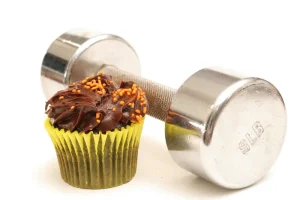If you lift hard and you’re running an anabolic-steroid cycle, your nutrition has to pull double duty: performance fuel and risk management. Dark chocolate—specifically high-cacao chocolate—can be an unexpectedly useful tool for both. When chosen and used intelligently, it supports vascular function, mood, training output, and adherence while adding a dose of minerals and polyphenols that many lifters quietly lack. Below is a practical, gym-tested guide that makes the case for keeping quality dark chocolate in your rotation.
Chocolate isn’t magic, but cocoa is uniquely rich in flavanols (like epicatechin) that help your endothelium—the inner lining of blood vessels—release nitric oxide more efficiently. Better nitric-oxide availability promotes vasodilation, which can translate to small reductions in blood pressure and improved blood flow to working muscle. On cycle, where some compounds nudge blood pressure upward and tighten the lipid profile, tiny advantages in vascular health add up. Think of dark chocolate as a supportive “micro-supplement” you can eat: not a preworkout buzz, but a gentle, repeatable push in the right direction.
There’s also a quiet metabolic story. Dark chocolate’s flavanols have been linked to improved insulin sensitivity and more favorable post-meal glucose responses—benefits you want whether you’re in a lean bulk or a controlled cut. Pair a square or two with a protein-rich meal and you get a tasty finish that can reduce the urge to chase dessert with something worse. For lifters who find cutting phases psychologically draining, this small satisfaction valve can prevent binge-and-repent cycles that wreck weekly compliance. Adherence is the most underrated “supplement”; chocolate helps you keep it.
Micronutrients matter on cycle, too. Quality dark chocolate delivers meaningful magnesium, plus a sprinkle of copper, iron, and manganese. Magnesium alone supports muscle function, sleep quality, and glucose regulation, yet many athletes fall short. Theobromine—the gentler cousin of caffeine in cocoa—provides a subtle lift in alertness and mood without spiking anxiety. For evening lifters, a few squares after dinner can take the edge off cravings and still keep sleep intact. If you’re sensitive to stimulants, choose an 85–90% bar and keep the portion modest; theobromine’s smoother curve is one reason chocolate feels “good” without feeling wired.
Let’s talk lipids and inflammation—the uncomfortable realities of some AAS compounds. A frequent objection is that chocolate “must be bad for cholesterol.” That’s mostly true for sugar-heavy milk or white chocolate, not for high-cacao bars. Cocoa itself tends to favorably influence HDL and LDL particle function in small but real ways. The caveat is fat and sugar: if you overshoot calories or choose a sugary bar, you’ll defeat the point. The solution is simple: select 70–90% cacao, make portion size non-negotiable, and integrate those calories into your plan. In a lean bulk, that might be a 150–200 kcal allotment after your two heaviest training days. In a cut, 50–100 kcal most evenings can curb cravings you’d otherwise fight and lose.
Performance? While chocolate won’t replace creatine or a dialed macronutrient plan, it complements what you’re already doing. Better endothelial function and a slight uptick in mood can make volume work feel smoother. Some athletes even notice that a square of 85% chocolate with a double shot of espresso ninety minutes pre-lift produces a clean, steady session—especially for hypertrophy blocks where you’re chasing pump, mind-muscle connection, and quality contractions more than 1RM heroics. If you’re caffeine-sensitive, move the chocolate post-workout or after dinner instead; its benefits aren’t tied to training timing the way caffeine is.
Practical execution is where most lifters win or lose. Start by setting rules. Rule one: only bars with cacao listed first, ideally 70–90%. Rule two: weigh once so you learn what “10–30 g” actually looks like (usually 1–3 squares, depending on the brand). Rule three: pre-log it. Calling chocolate “a treat” but treating it like a freebie is how cutting phases stall. When you log it, you own it. If you’re eating very low carb, consider unsweetened cacao nibs in Greek yogurt or a scoop of casein: you’ll keep sugars nearly zero while getting that deep cocoa bite.
Here are simple ways to integrate dark chocolate into a cycle without derailing your macros. For a recomp or lean bulk, take 20–30 g (100–170 kcal) after your two hardest sessions each week. It’s a small reward that fits neatly into higher-calorie days, and the flavanols support recovery. For a cut, go with 10–15 g (50–80 kcal) on most nights, ideally after dinner to cap hunger. If evenings are your weak spot, pair 10 g of 85–90% chocolate with peppermint tea and a casein pudding; it scratches the sweet itch while giving you slow-digesting protein for overnight muscle repair. During deloads or rest weeks, keep the habit but scale down the portion so calories match output.
AAS-specific considerations deserve clarity. Chocolate doesn’t fix blood pressure, hematocrit, or unfavorable lipid shifts on its own. It simply nudges in the right direction while making your plan more livable. Keep your core safeguards: omega-3 intake, fiber (oats, beans, berries), adequate hydration, regular BP checks, labs for lipids and liver enzymes, and periodic hematology if your compound choices warrant it. But since you’re already doing those things, a low-sugar, high-cacao chocolate slot often improves compliance to the whole routine—because plans you enjoy are plans you sustain. And sustained plans are how you finish a cycle strong and transition to PCT without chaos.
Quality and safety matter. Not all bars are equal in flavanol content; higher percentage cacao generally signals more cocoa solids—and more of the stuff you want—than lower percentages. Look for brands that publish cocoa origin and testing standards. Some cocoa products have been flagged for heavy metals like cadmium and lead at trace levels. The practical workaround is rotation (don’t eat the same brand every day for months), moderate portions, and gravitating toward reputable manufacturers that share test data. If you want maximal flavanol density with minimal sugar, consider a calibrated cocoa powder (often labeled “high-flavanol”) for shakes and oatmeal; you can add stevia or just ride the bitter for a grown-man taste that shouts discipline.
Because you’re optimizing results, here’s a sample seven-day integration for a 250-lb male on a moderate-dose cycle running a push/pull/legs split with two conditioning days. Monday (push, heavy): 25 g of 85% dark chocolate after dinner. Tuesday (conditioning): skip or 10 g if cravings hit. Wednesday (pull, volume): 20 g post-workout with a protein shake. Thursday (rest): 10 g with casein pudding before bed. Friday (legs, brutal): 25 g after your highest-carb meal. Saturday (conditioning): none. Sunday (upper accessories + posing): 10–15 g with peppermint tea. Weekly total: 100–105 g—roughly 600 kcal—easily budgeted and unlikely to harm your body composition when the rest of your diet and training are tight.
You can also deploy chocolate tactically. Before a big social meal, nibble 10 g of 90% chocolate with a glass of water. That intense cocoa plus mild theobromine narrows cravings and helps you stay selective when faced with dessert trays. During travel, a wrapped 85% bar is a better emergency “treat” than airport pastries, with cleaner macros and less regret. In PCT, when mood and motivation can dip, using a small, nightly chocolate ritual as a psychological anchor keeps you connected to the process—and that matters as much as any supplement list.
What about pairing chocolate with other staples? Chocolate plus berries doubles down on polyphenols and fiber. Chocolate with almonds boosts magnesium and adds crunch. Stirring cocoa powder into overnight oats with whey and chia seeds turns breakfast into a flavanol-rich recovery bowl that still fits macros. In a shake, 1 tablespoon of unsweetened cocoa powder, 1 scoop whey isolate, 8–10 oz milk or milk alternative, ice, and a pinch of salt tastes like you cheated when you didn’t. If you crave variety, cacao nibs bring texture to yogurt or cottage cheese with nearly no sugar—pure cocoa “gravel” that lifters grow to love.
There are myths worth busting so you can enjoy chocolate confidently. “Chocolate gives acne” is often exaggerated; oil-heavy, sugar-bomb snacks and overall calorie excess are the bigger culprits. High-cacao chocolate, in small amounts, is unlikely to be the deciding factor for skin, especially if the rest of your diet emphasizes whole foods and hydration. “Chocolate ruins your pump” makes no physiological sense; if anything, flavanol-driven nitric oxide support leans your way. “Chocolate makes you fat” ignores portion control and context; 100 kcal of 85% chocolate is a rounding error in a clean, protein-forward plan.
Let’s pull it together into a simple protocol you can start tonight. Step one: buy a bar of 85–90% dark chocolate from a reputable brand. Step two: decide your default dose—10 g nightly for cuts, 20–25 g twice weekly for bulks. Step three: log it before you eat it. Step four: pair it with protein or after your largest carb meal to stabilize appetite. Step five: rotate brands monthly and schedule routine health checks (BP weekly, labs per your physician’s guidance). This five-step loop is sustainable, satisfying, and favorable to the cardiovascular realities of training enhanced.
If you want to level up further, consider an occasional swap: two or three nights a week, replace the bar with 1–2 tablespoons of unsweetened cocoa blended into a protein shake or stirred into hot milk. You’ll preserve the polyphenols with even less sugar and near-zero added fat, which is perfect deep in a cut. On the flip side, if you’re driving calories up in a lean bulk and struggling to hit targets cleanly, dark- chocolate-coated almonds can plug a calorie gap while keeping ingredient lists short and quality high.
chocolate-coated almonds can plug a calorie gap while keeping ingredient lists short and quality high.
None of this replaces fundamentals: whole-food proteins, colorful plants, smart carbohydrates, adequate fiber, omega-3s, hydration, sleep, and a measured approach to compound choice and bloodwork. But high-cacao chocolate is one of the few “fun” foods that harmonizes with those fundamentals rather than fighting them. It supports vascular tone, smooths appetite, contributes meaningful micronutrients, and makes your plan more enjoyable. On cycle, where the margin for error narrows, that’s exactly the kind of food you want in your corner.
In short, dark chocolate earns a spot in an enhanced lifter’s pantry not as a guilty pleasure but as a strategic ally. Use it precisely—in grams, not guesses. Choose quality over novelty. Pair it with protein, fold it into your macros, and let its polyphenols, minerals, and quiet mood lift make your daily plan easier to execute. The result is steadier training, cleaner recovery, and a nutrition strategy you’ll actually stick to—square by square, week after week.
Harvard Health Publishing. “The sweet benefits of dark chocolate.” https://www.health.harvard.edu/heart-health/the-sweet-benefits-of-dark-chocolate
Ried K, Fakler P, Stocks NP. “Effect of cocoa on blood pressure.” Cochrane Database Syst Rev. 2017;4:CD008893. https://www.cochranelibrary.com/cdsr/doi/10.1002/14651858.CD008893.pub3/full
EFSA Panel on Dietetic Products, Nutrition and Allergies (NDA). “Cocoa flavanols and maintenance of normal endothelium-dependent vasodilation.” EFSA Journal. 2012;10(7):2809. https://efsa.onlinelibrary.wiley.com/doi/10.2903/j.efsa.2012.2809
Grassi D, et al. “Short-term administration of dark chocolate improves insulin resistance and reduces blood pressure.” Am J Clin Nutr. 2005;81(3):611–614. https://academic.oup.com/ajcn/article/81/3/611/4649342
Heiss C, et al. “Improvement of endothelial function with dietary flavanol-rich cocoa in healthy humans.” J Cardiovasc Pharmacol. 2000;35(2):R : (supplement). https://journals.lww.com/cardiovascularpharm/Abstract/2000/02001/Improvement_of_Endothelial_Function_with_Dietary.5.aspx
Katz DL, et al. “Cocoa and chocolate in human health and disease.” Antioxid Redox Signal. 2011;15(10):2779–2811. https://www.liebertpub.com/doi/10.1089/ars.2010.3697
Martinez-Pinilla E, Oñatibia-Astibia A, Franco R. “The relevance of theobromine for the beneficial effects of cocoa consumption.” Front Pharmacol. 2015;6:30. https://www.frontiersin.org/articles/10.3389/fphar.2015.00030/full
Hartgens F, Kuipers H. “Effects of androgenic-anabolic steroids in athletes.” Sports Med. 2004;34(8):513–554. https://link.springer.com/article/10.2165/00007256-200434080-00003
Consumer Reports. “Lead and cadmium could be in your dark chocolate.” 2023. https://www.consumerreports.org/food/lead-and-cadmium-could-be-in-your-dark-chocolate-a4425971925/
Harvard Book Store. https://www.harvard.com






